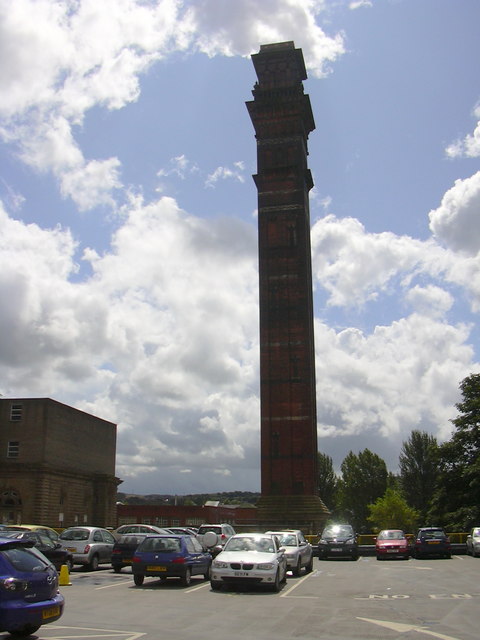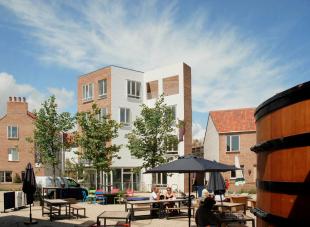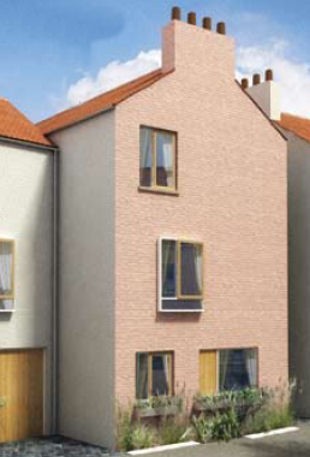Gareth Hughes
Member
- Messages
- 2,741
- Location
- In the wilds of East Anglia
I suspect Blists Hill's new street has had to be new because there aren't enough old buildings under threat to be moved, as there were when the museum started. This is probably a good thing.
As much as the issue of getting the details right in the faux-traditional buildings themselves, I think a much bigger reason why the typical olde modern development doesn't look right is that the spaces between the buildings, and their relationship with each other, are just wrong. This is often the result of the unchecked power of the highways engineers who have truly awful tick-box checklists without which they would be lost.
Council tax payers recently kindly funded a "fact finding" trip to HRH's Poundbury model village,a dn to the Upton "Urban Extension" at Northampton, which is supposed to be an application of "Poundbury Principles" to another large development. There's a lot not to like at Poundbury, the fakery and chocolate boxiness is terribly twee, but, to my great surprise, it is at least a very pleasant bit of new development which seems to be successful on its own terms, if a bit of a middle-class ghetto, and if you think dressing up as your great great granny is the appropriate response to life in the early 21st century. One reason why it works is that the spaces between are "right" in relation to the buildings. A less pleasant surprise was that, although Upton is great on paper and does all the right things in theory, it's absolutely horrible, because the spaces are wrong, compounded with lousy proportions and detailing. (Poundbury first, then Upton):View attachment 1
Now, to move on to unashamedly "modern" developments, I was in Southwold recently and was delighted by a new development called Tibby's Triangle (Hmmmmm) on the site of Adnams old warehouses in the middle of town. Unfortunately I don't have a decent photo and the available images on the web don't do it justice, but it is super as an intelligent adaptation of traditional materilas, to make a properly urban setting, with excellent attention paid to the largely pedestrianised spaces throughout. So it's disappointing to read guff like this being spouted about it http://homesandtravel.co.uk/2009/07/24/southwold-east-anglian-magic/
Name a traditional town that didn't have some industry at the heart of it - is this guy against Adnams' retaining their brewery, even closer to the town centre? and the density is much higher than any 90s development, but close to that of the older parts of Southwold. The problem is that that sort of ill-informed and frankly ignorant twaddle carries too much influence when people talk about new development. I'm not sure what "retro buildng technologies" is supposed to mean, but the local vernacular must have relied on them.
As much as the issue of getting the details right in the faux-traditional buildings themselves, I think a much bigger reason why the typical olde modern development doesn't look right is that the spaces between the buildings, and their relationship with each other, are just wrong. This is often the result of the unchecked power of the highways engineers who have truly awful tick-box checklists without which they would be lost.
Council tax payers recently kindly funded a "fact finding" trip to HRH's Poundbury model village,a dn to the Upton "Urban Extension" at Northampton, which is supposed to be an application of "Poundbury Principles" to another large development. There's a lot not to like at Poundbury, the fakery and chocolate boxiness is terribly twee, but, to my great surprise, it is at least a very pleasant bit of new development which seems to be successful on its own terms, if a bit of a middle-class ghetto, and if you think dressing up as your great great granny is the appropriate response to life in the early 21st century. One reason why it works is that the spaces between are "right" in relation to the buildings. A less pleasant surprise was that, although Upton is great on paper and does all the right things in theory, it's absolutely horrible, because the spaces are wrong, compounded with lousy proportions and detailing. (Poundbury first, then Upton):View attachment 1
Now, to move on to unashamedly "modern" developments, I was in Southwold recently and was delighted by a new development called Tibby's Triangle (Hmmmmm) on the site of Adnams old warehouses in the middle of town. Unfortunately I don't have a decent photo and the available images on the web don't do it justice, but it is super as an intelligent adaptation of traditional materilas, to make a properly urban setting, with excellent attention paid to the largely pedestrianised spaces throughout. So it's disappointing to read guff like this being spouted about it http://homesandtravel.co.uk/2009/07/24/southwold-east-anglian-magic/
Tibby’s Triangle, and the Adnams Cellar and Kitchen Store located on the site of the old Adnam’s distribution centre, is completely out of character with the rest of the town.
A local resident commented recently, “I’m all for architect-led, contemporary and sustainable development but Tibby’s Triangle appears to be a 90’s throwback – too dense, retro-building technologies, and with no understanding of the local vernacular.”
The Cellar and Kitchen Store is clad in shiny corrugated aluminium and the front of the building is sliced away at a weirdly acute angle and frankly, it’s hard to believe it ever received planning consent, so little does it blend in with it’s surroundings. This is industry plonked down in the heart of a traditional-looking East Anglian coastal town.
Name a traditional town that didn't have some industry at the heart of it - is this guy against Adnams' retaining their brewery, even closer to the town centre? and the density is much higher than any 90s development, but close to that of the older parts of Southwold. The problem is that that sort of ill-informed and frankly ignorant twaddle carries too much influence when people talk about new development. I'm not sure what "retro buildng technologies" is supposed to mean, but the local vernacular must have relied on them.



